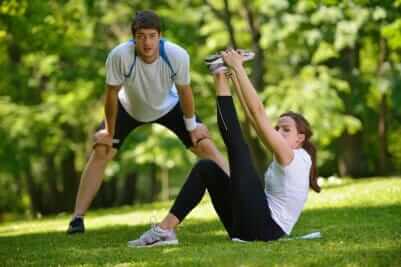Self-Assessment in the New Year by William Smith, MS, NSCA, CSCS, MEPD
This past week I was bending over to pick up my 1 year old son and as I was doing this my back tightened up. Nothing unusual about this by any stretch, yet the fact it began tightening up throughout the day struck me as odd. This ‘pulling’ sensation got me thinking “why would this happen now?” Okay, to be honest, I haven’t been exercising regularly so that plays into, but my back? Hasn’t been an issue in 10 years!
With the New Year upon us, and resolutions plentiful, there is no better time to explore (i.e. self-assess) the roots of my own discomfort and share some knowledge that may useful to you as a reader as well.
Self-Assessment: Getting the Baseline
One of the most often overlooked aspects of any healthy living plan is self-assessment. An assessment may come in the form of a survey, body composition, treadmill test, weekly food journal, etc. You get the idea. The point is you should have a reference point to re-visit that says “hey I’m doing great!” or “WOW, did I drop the ball!”. For the purposes of a simple self-assessment that requires no equipment or special apparatus, run yourself through the following assessment and see where you have difficulties.
● Standing Calf Raise: Measures Balance/Ankle Flexibility
● Squatting: Movement of all Major Joints in Lower Body
● Cross the Ankle over the opposite Knee: Hip Flexibility
● ‘Scratch the Back’ with your hand: Shoulder Flexibility
● Rotating in Place (Sitting): Torso Flexibility
● Stair Walking (Up/Down with and w/o railing): Lower Body Strength and Balance
Were any of the movements more difficult than others? If so, those are the areas to focus on. One tip that many trainers and therapists apply is the Joint-by-Joint approach. For example, if you have lower back discomfort, as in my case earlier in the week, stretch/strengthen the areas above and below the back. I stretched my hips along with concentrating on good posture for the day. This really helped! For a comprehensive movement assessment, readers should look into having a Functional Movement Screen completed by a certified fitness professional. The ‘FMS’ is a very popular movement screen that provides excellent information on movement restrictions, thus useful in designing an exercise program.
In closing, it’s difficult enough finding time to exercise. Make your time focused and efficient by using all or parts of this self-assessment that you feel are important. I always end a lecture saying “if you took one point from today’s lecture that improves your quality of life, it was worth attending.” By the way, my back feels better!
WILLIAM SMITH, MS, NSCA, CSCS, MEPD, completed his B.S. in exercise science at Western Michigan University followed by a master’s degree in education and a post-graduate program at Rutgers University. In 1993, Will began coaching triathletes and working with athletes and post-rehab clientele. He was a Division I Collegiate Strength Coach and has been competing in triathlons and marathons since 1998, finishing 7 marathons and 1/2 Ironman. Will currently works for the #1 Ranked Hospital developing Employer-Based Health and Wellness Programs for Companies, specializing in installing On-Site Medical and Health Suites to assist in lowering employee healthcare costs. Will has advanced specialty certifications in cancer, post-rehab exercise and athletic development. Will has also co-authored the definitive guide to triathlon training, Tri Power. He is also the author of several books in the popular Exercises For series including Exercises for Heart Health, Exercises for Back Pain, Exercises for Brain Health, and many others.





